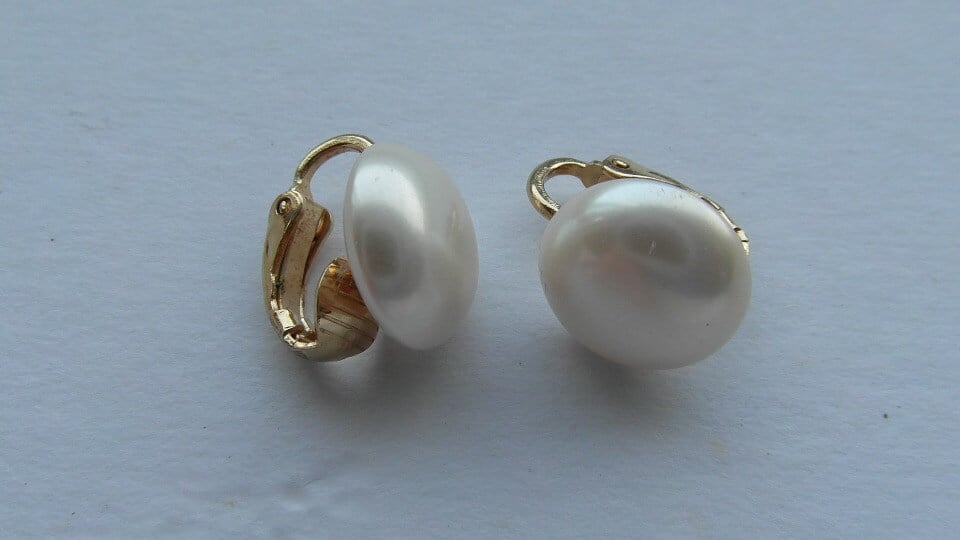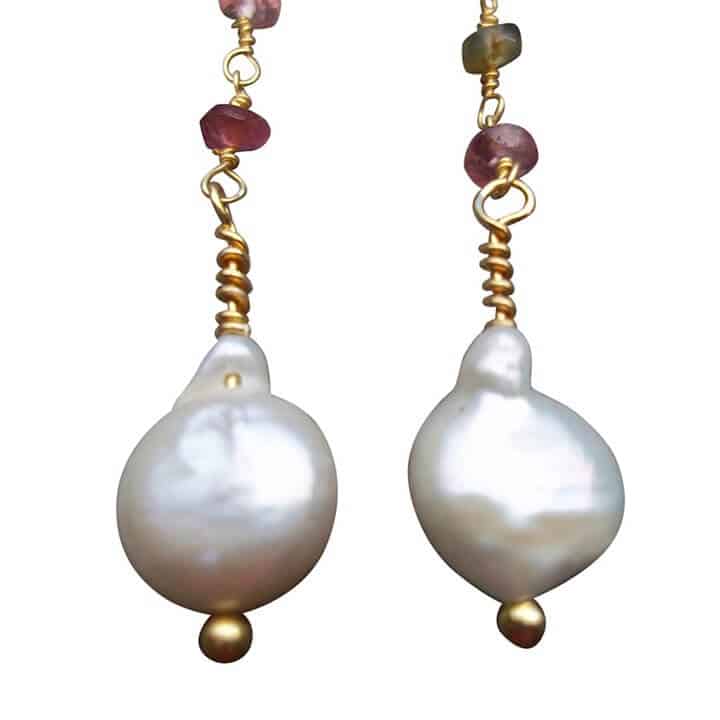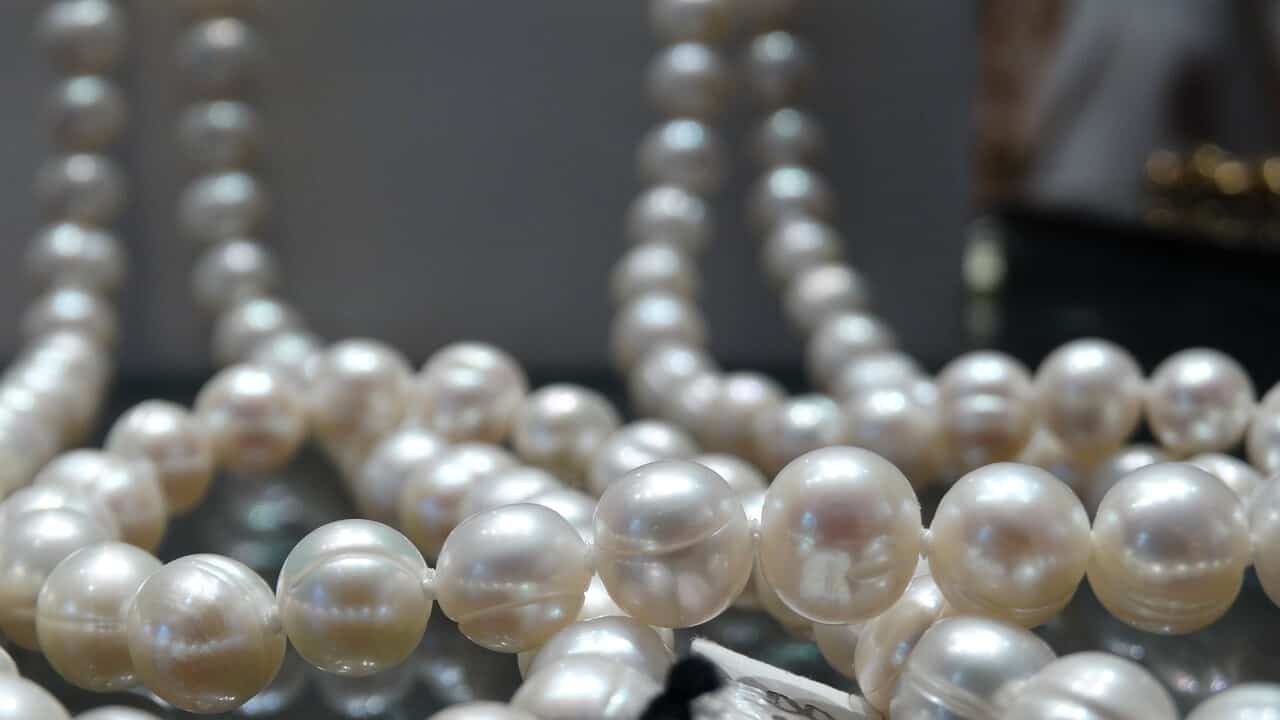Pearls are a staple for any jewelry collection. It’s a worthwhile investment that can be worn for decades and handed down to the next generation. And while pearls have sometimes gone out of style in the past, they always cycle back in.
If you’re looking to add pearls to your collection, it’s important to know the different types of pearls available to you. There are so many options that it’s easy to get overwhelmed and confused.
In this article, we’re going to break down the main types of pearls, outlining their pros and cons, to help you decide which suits you best.
General Pearl Knowledge – Pearl 101
Before we look at the different types of pearls available on the market today, it’s important to get the meaning of certain terms sorted out. When it comes to pearls, you’ll hear these words a lot and not knowing what they mean can make it very difficult to choose the right pearls for you.
What are Natural Pearls?
Natural pearls refer to pearls that have formed naturally in oysters and molluscs. These haven’t been manipulated in anyway but have formed by accident, when an irritant gets into the creature which activates its defence mechanism – it begins to coat the irritant with nacre to make it less uncomfortable. Natural pearls are extremely rare and valuable, and it’s highly likely that you won’t come across these. Most pearls on the market today are cultured.
What are Cultured Pearls?
Cultured pearls are those that have been farmed and grown through man-made processes. These pearls are grown in large farms in conditions made to mimic natural environments. When the oyster or mussel is ready, an irritant is embedded into the animal. This forces the creature to start secreting nacre which eventually forms a pearl.
What are Freshwater and Saltwater Pearls?
You’ll come across some sites claiming that saltwater and freshwater pearls are natural pearls but this isn’t true. The terms freshwater and saltwater simply refer to the type of environment the creature is grown in as well as the type of creatures used for the process. All pearls fall into one or the other of these two categories.
- Saltwater – These pearls are considered superior and are formed in oysters. The best examples are Golden South Sea, Akoya and Tahitian pearls. They form in oceans, take longer to grow and therefore have better quality, luster and overtones. They’re also more expensive and come chiefly from Australia, Tahiti and Indonesia.
- Freshwater – These pearls are grown in lakes and rivers and form in mussels, not oysters. They grow quicker and aren’t as lustrous, large or beautiful as saltwater pearls. These mainly come from China, Australia, India and the US.
Main Types of Pearls
Now let’s take a look at the 4 main types of pearls you’ll find when you go shopping.
Freshwater Pearls
Freshwater pearls were initially cultured as a more affordable alternative to the highly sought after Akoya pearl. With the improvements in technology, today freshwater pearls are of very good quality and sometimes telling them apart from Akoya pearls can be difficult.
Freshwater pearls come in a variety of colors, sizes and shapes and designers love to work with them for this reason. This is why they’re called the fashion-forward pearl.
If you’re on a budget, or you’re looking to buy your first piece of pearl jewelry, freshwater pearls are a great place to start. They’re more durable than saltwater pearls, much more affordable and almost equally beautiful.
Akoya Pearls
Akoya pearls were the first pearl variety to be cultured back in the 1920s. Before this, pearls were a luxurious gemstone that only the rich could afford. They were the first pearls that were accessible to the masses and so people went crazy for them. Today they continue to be among the most popular pearl varieties.
Akoya pearls are typically small, but sometimes can grow up to 10.0 mm in size. They’re also generally perfectly spherical and have a beautiful luster. Akoya pearls that come from Japan are considered to be the best. These pearls are more expensive than freshwater pearls, but less expensive than other saltwater varieties.
South Sea Pearls
Called the Rolls Royce of pearls, South Sea pearls are large with stunning luster and color. The two colors they come in are gold and white, with the golden pearls considered among the best of all pearl varieties. These pearls can grow up to 20.0 in diameter, which is about the size of a large marble. These pearls are pretty pricey, so owning one is a sign of wealth and status.
Tahitian Pearls
Among the most unique of the pearl types, Tahitian are the only naturally black pearls. They come in a range of dark colors with unique overtones. These pearls also grow quite large and come in a range of shapes. They’re more affordable than South Sea pearls.
Less Common Pearl Types
Mabe Pearls
Mabe pearls aren’t a pearl variety but rather a way that pearls grow. They’re also called half-pearls or blister pearls. These pearls have a flat side and a rounded side, with the front view looking like a normal pearl while the back view shows the half-pearl.

Mabe pearls are grown on purpose by fixing the irritant onto the shell rather than into the tissue of the mollusc. As the creature secretes the irritant with nacre, it grows into a dome-shaped pearl.
Baroque Pearls
Baroque pearls refer to any pearl that isn’t perfectly round. This means that all pearls can also be divided into two, based on shape – baroque and non-baroque. While in the past baroque pearls were seen as imperfect and flawed and to be avoided like the plague, today they’re celebrated, valued and sought-after.

Baroque pearls allow designers to get creative, often resulting in one-off designs that are truly unique. With the increase in demand for unconventional pearl shapes, the value of baroque pearls has increased and continues to grow.
Keshi Pearls
Keshi pearls refer to the shape rather than to a type. These pearls come in a range of interesting and unique shapes because they form without a nucleus, generally because the mollusc rejects the nucleus put into it. You’ll find some thin and long while others might be flat and wide. Because keshi pearls are all nacre and no nucleus bead, they typically have exceptional luster and overtones. These days, keshi pearls are rare because advancements in pearl-harvesting technology means that farmers can re-nucleate the oyster if it’s rejected the original nucleus.
Shell Pearls
Shell pearls have become quite popular lately. These are man-made using pulverised mother of pearl (a.k.a. nacre) which is then combined with other materials and formed into pearl-like shapes. These ‘pearls’ are then coated to imitate the appearance of real pearls. While they are fake pearls, they are made of the same materials that real pearls are made of. This makes shell pearls a cross between fake and real pearls. While these aren’t pearls per se, shell ‘pearls’ look almost exactly like the real thing and are much more durable.
Edison Pearls
A new edition to pearl varieties, Edison pearls are freshwater pearls that have been cultivated in freshwater sources. Edison pearls are a freshwater pearl experiment, created to compete with South Sea pearls and have only been on the market for a couple of years
Edison pearls come in a variety of colors and typically range from 11.0 -16.0mm in size. They have a luster and appearance that’s similar to South Sea pearls but because they’re grown in conditions similar to freshwater pearls, they’re much less expensive. These pearls have intense luster, gorgeous orient and a smooth, ridge-free surface.
Which Pearl Variety to Choose
When choosing the right pearl variety for you, the main considerations are budget, quality and appearance. It’s best that you take some time to explore the pearl varieties and see which suits your style.
If budget is the most important consideration, then a freshwater pearl will be your best bet as these are the most affordable.
However, if you’re after a luxurious, large pearl, you might find the South Sea pearls more suited to your taste.
If you want the most unique type of pearl, you could choose Tahitian or a baroque variety while Akoya pearls will be perfect if you’re after a traditional, classic look.
The right pearl for you really depends on what exactly you’re after.
How to Look After Your Pearls
One thing that all the above pearls have in common is that they’re very soft gemstones and require good care to keep them lustrous and lasting through the years. For a detailed look at how to take care of your pearls, check out our article on this topic.
For a quick outline, follow these care tips:
- Avoid harsh chemicals and detergents, including sweat and body oils
- Store carefully in a separate compartment
- Keep your pearl jewelry safe from impact, knocks and bumps
- Take off pearl jewelry when engaging in vigorous physical activity
- Wash and clean your pearls carefully
- Avoid direct sunlight as this can cause fading and discoloration
Where to Buy Pearl Jewelry From
While most jewelers carry pearl collections, we recommend taking your search online because this way, you’ll be able to access competitive prices and a wide range of designs.
Always look for a trustworthy vendor who knows their pearls. Remember that branded pearl jewelry, like Mikimoto, will cost much more than a lesser known brand, even though the product may be exactly the same.
Most online pearl specialists also offer their products via Amazon, meaning that you can make use of your Amazon Prime membership (if you have one), especially with fast and free shipping.



Add Comment